Solar eclipse of July 1, 2000
A partial solar eclipse occurred on July 1, 2000. A solar eclipse occurs when the Moon passes between Earth and the Sun, thereby totally or partly obscuring the image of the Sun for a viewer on Earth. A partial solar eclipse occurs in the polar regions of the Earth when the center of the Moon's shadow misses the Earth. This eclipse occurred near the south pole, and was visible from the southern tip of South America at sunset.
| Solar eclipse of July 1, 2000 | |
|---|---|
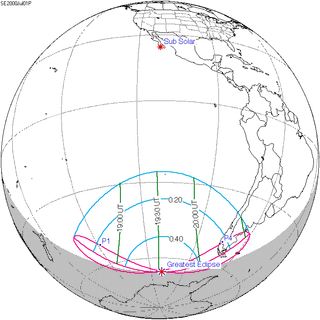 Map | |
| Type of eclipse | |
| Nature | Partial |
| Gamma | -1.2821 |
| Magnitude | 0.4768 |
| Maximum eclipse | |
| Coordinates | 66.9°S 109.5°W |
| Times (UTC) | |
| Greatest eclipse | 19:33:34 |
| References | |
| Saros | 117 (68 of 71) |
| Catalog # (SE5000) | 9509 |
Images

Related eclipses
Eclipses of 2000
Solar eclipses 2000–2003
This eclipse is a member of a semester series. An eclipse in a semester series of solar eclipses repeats approximately every 177 days and 4 hours (a semester) at alternating nodes of the Moon's orbit.[1]
Note: Partial solar eclipses on February 5, 2000 and July 31, 2000 occur in the previous lunar year set.
| Solar eclipse series sets from 2000–2003 | ||||||
|---|---|---|---|---|---|---|
| Ascending node | Descending node | |||||
| Saros | Map | Gamma | Saros | Map | Gamma | |
| 117 | 2000 July 1 Partial (south) | -1.28214 | 122 | 2000 December 25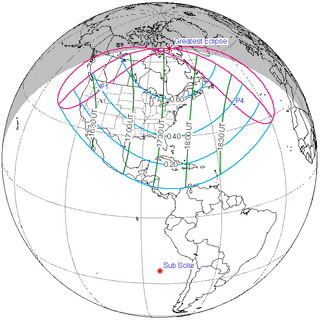 Partial (north) | 1.13669 | |
127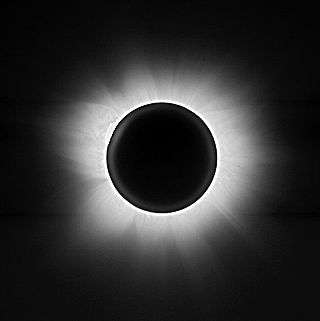 Totality from Lusaka, Zambia | 2001 June 21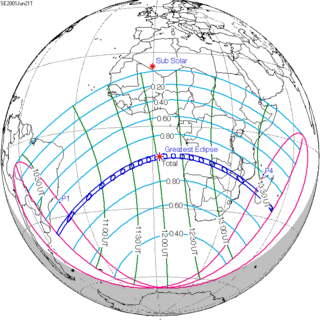 Total | -0.57013 | 132 Partial from Minneapolis, MN | 2001 December 14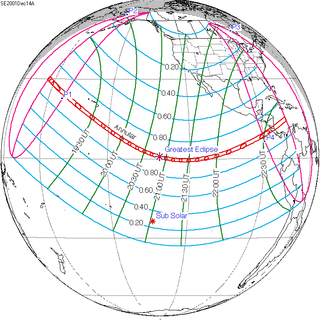 Annular | 0.40885 | |
137.jpg) Partial from Los Angeles, CA | 2002 June 10 Annular | 0.19933 | 142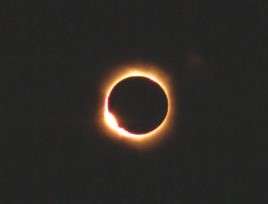 Totality from Woomera | 2002 December 4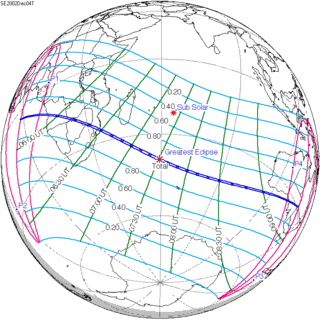 Total | -0.30204 | |
147 Partial from Belfort | 2003 May 31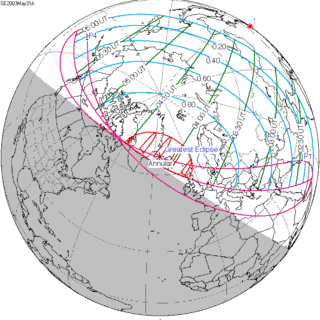 Annular | 0.99598 | 152 | 2003 November 23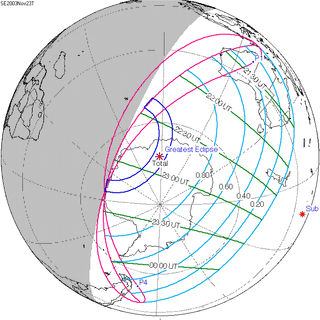 Total | -0.96381 | |
Metonic series
The metonic series repeats eclipses every 19 years (6939.69 days), lasting about 5 cycles. Eclipses occur in nearly the same calendar date. In addition, the octon subseries repeats 1/5 of that or every 3.8 years (1387.94 days). All eclipses in this table occur at the Moon's ascending node.
| 21 eclipse events, progressing from south to north between July 1, 2000 and July 1, 2076 | ||||
|---|---|---|---|---|
| July 1–2 | April 19–20 | February 5–7 | November 24–25 | September 12–13 |
| 107 | 109 | 111 | 113 | 115 |
| July 1, 1981 | April 20, 1985 | February 6, 1989 | November 24, 1992 | September 12, 1996 |
| 117 | 119 | 121 | 123 | 125 |
 July 1, 2000 |
 April 19, 2004 |
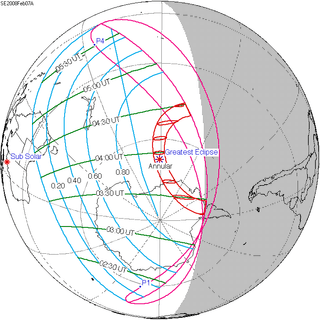 February 7, 2008 |
 November 25, 2011 |
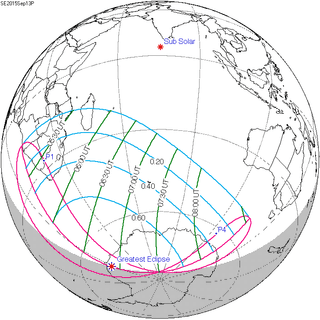 September 13, 2015 |
| 127 | 129 | 131 | 133 | 135 |
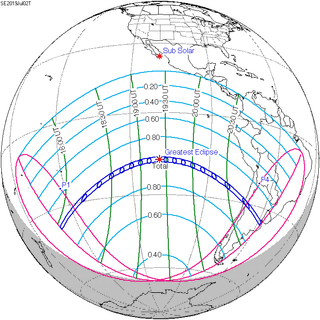 July 2, 2019 |
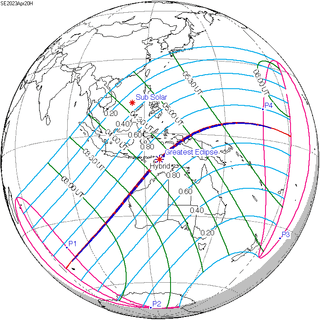 April 20, 2023 |
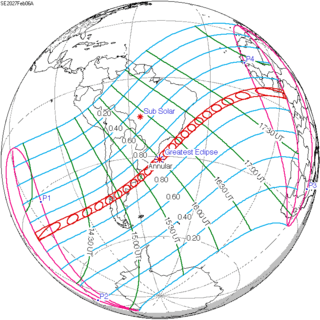 February 6, 2027 |
 November 25, 2030 |
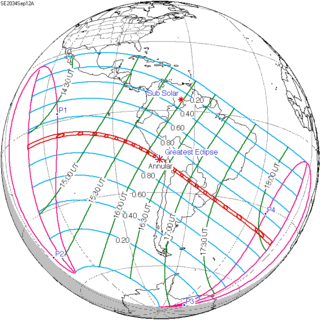 September 12, 2034 |
| 137 | 139 | 141 | 143 | 145 |
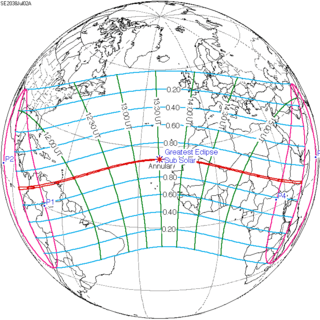 July 2, 2038 |
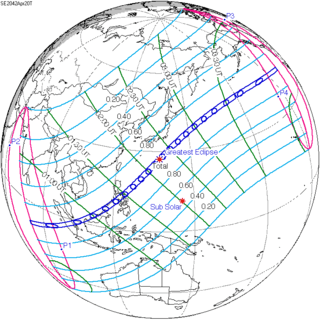 April 20, 2042 |
 February 5, 2046 |
 November 25, 2049 |
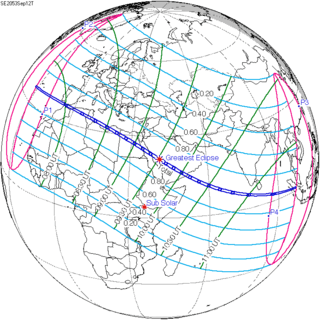 September 12, 2053 |
| 147 | 149 | 151 | 153 | 155 |
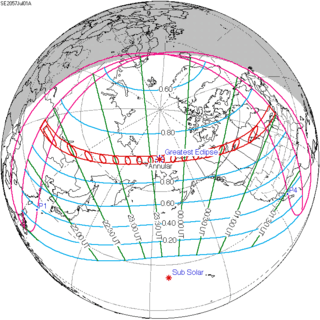 July 1, 2057 |
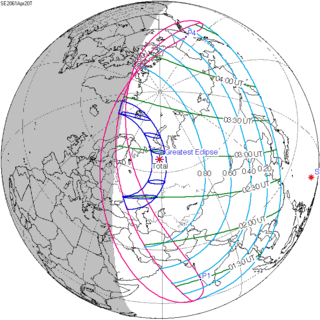 April 20, 2061 |
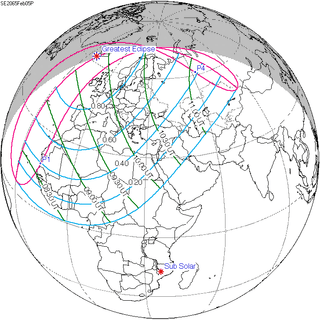 February 5, 2065 |
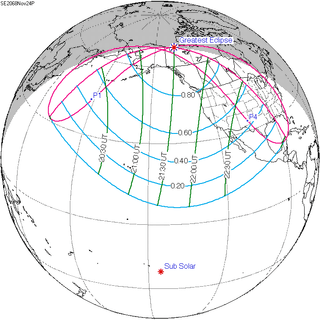 November 24, 2068 |
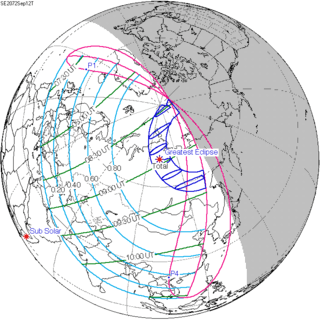 September 12, 2072 |
| 157 | 159 | 161 | 163 | 165 |
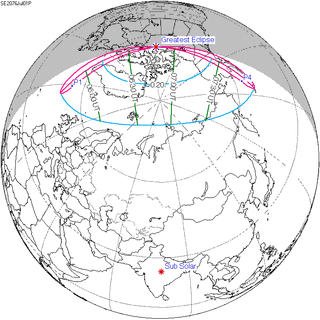 July 1, 2076 |
April 19, 2080 | February 6, 2084 | November 25, 2087 | September 13, 2091 |
References
- van Gent, R.H. "Solar- and Lunar-Eclipse Predictions from Antiquity to the Present". A Catalogue of Eclipse Cycles. Utrecht University. Retrieved 6 October 2018.
External links
- Earth visibility chart and eclipse statistics Eclipse Predictions by Fred Espenak, NASA/GSFC
.jpg)
